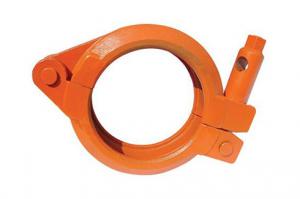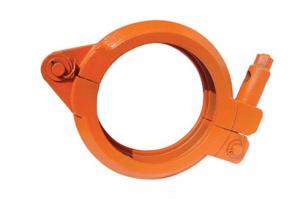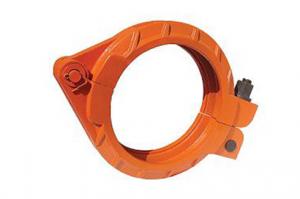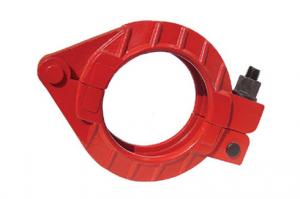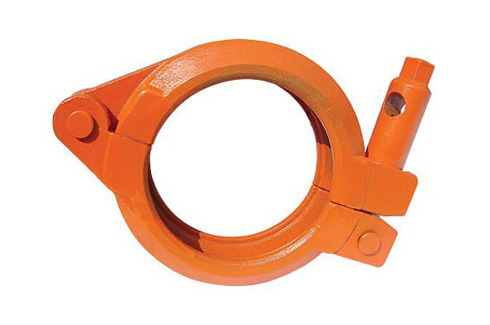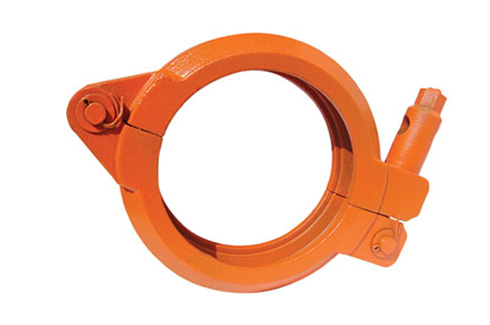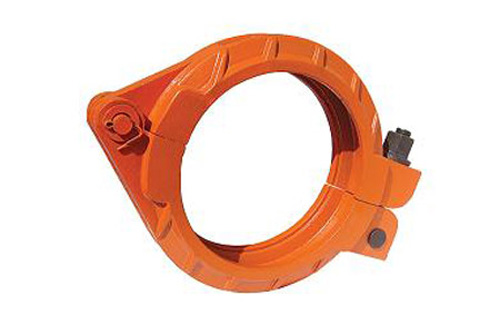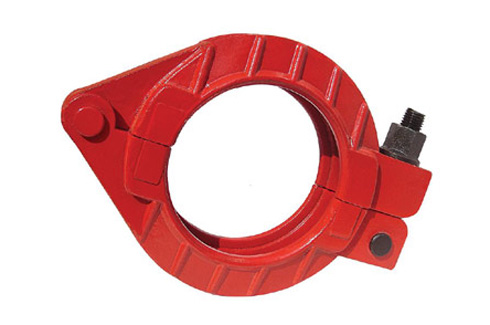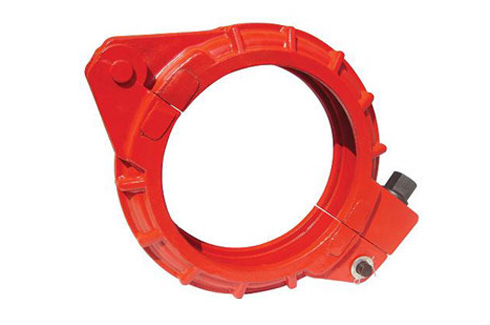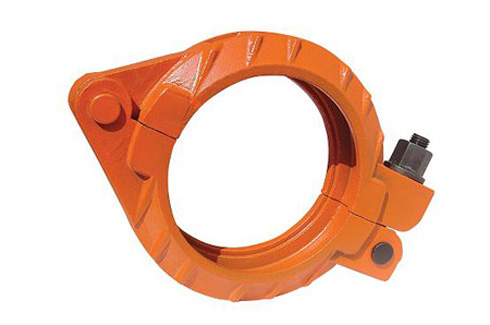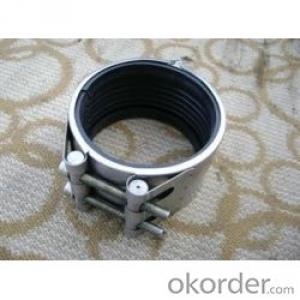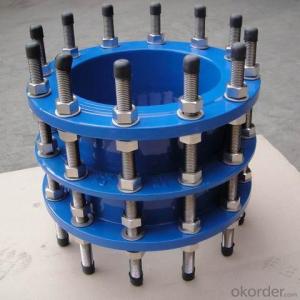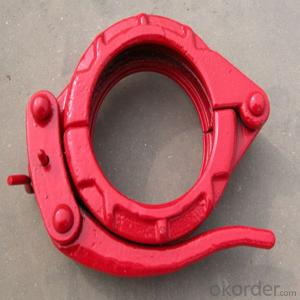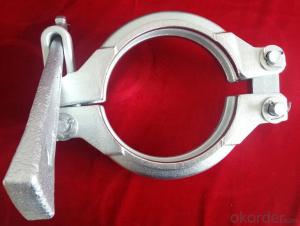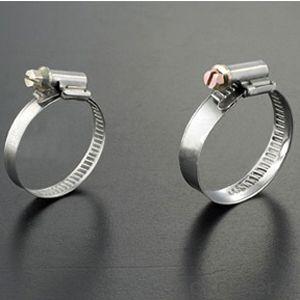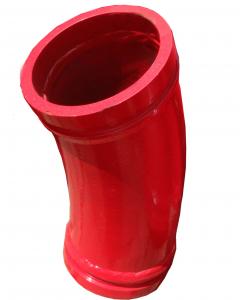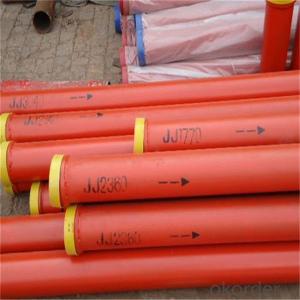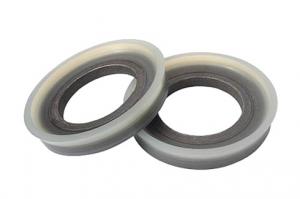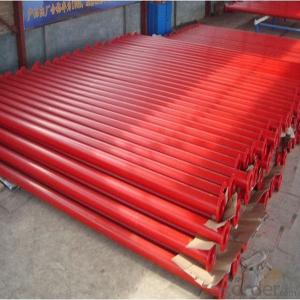Clamp Coupling DN50-DN200
- Loading Port:
- China Main Port
- Payment Terms:
- TT OR LC
- Min Order Qty:
- -
- Supply Capability:
- -
OKorder Service Pledge
Quality Product, Order Online Tracking, Timely Delivery
OKorder Financial Service
Credit Rating, Credit Services, Credit Purchasing
You Might Also Like
Size: 2"-8" (DN50-DN200)
Brand: Putzmeister, Schwing, Sany
Series: Screw Coupling, Bolt Coupling, SnapCoupling
Other products:
1) Putzmeister/ Schwing/ Zoomlion/ SermacRam Pistons
2) Putzmeister/ IHI/ Kyokuto/ Zoomlion/ SanySeperated Piston
3) Wear-resisting board and Cuts ink
4) Rubber hose
5) ST52 steel pipe, elbow, reducer
6) Cleaning seriesand others
- Q: How does a concrete pump agitator motor prevent concrete from settling?
- A concrete pump agitator motor prevents concrete from settling by continuously rotating and agitating the mixture, ensuring that the aggregate, cement, and water remain well-mixed. This agitation action prevents the heavier components from sinking and settling at the bottom, maintaining a homogeneous consistency throughout the concrete.
- Q: How can a faulty water pump affect the concrete pumping operation?
- A faulty water pump can have several negative effects on a concrete pumping operation. Firstly, a water pump is responsible for supplying water that is used to mix the concrete and maintain its proper consistency. If the water pump is faulty and not functioning correctly, it may not be able to supply the required amount of water, resulting in the concrete mix being too dry or not well-mixed. This can lead to a poor-quality concrete mix that is difficult to pump and may not set properly, compromising the structural integrity of the concrete. Additionally, a faulty water pump can affect the efficiency and productivity of the concrete pumping operation. If the pump is not working efficiently, it may take longer to mix and deliver the concrete, causing delays in the construction process. This can lead to increased costs and potential disruptions to project timelines. Furthermore, a faulty water pump can also impact the safety of the concrete pumping operation. Adequate water supply is essential for preventing the concrete from overheating during the pumping process. If the water pump fails to supply enough water, the concrete can heat up rapidly, leading to a phenomenon called thermal cracking. Thermal cracking weakens the concrete and can cause it to fail prematurely, posing a safety risk to workers and the overall structure. In summary, a faulty water pump can negatively impact a concrete pumping operation by resulting in poor-quality concrete mixes, decreased efficiency and productivity, and potential safety hazards. It is crucial to regularly inspect and maintain water pumps to ensure their proper functioning and prevent any detrimental effects on the concrete pumping process.
- Q: What is the purpose of a concrete pump hopper agitator motor?
- To ensure a smooth and consistent flow of concrete within the hopper, the concrete pump hopper agitator motor serves its purpose. It takes responsibility for mixing and agitating the concrete mixture, preventing any settling or thickening. By keeping the concrete in a fluid state, this motor ensures easy pumping and distribution through the delivery system. Absence of the agitator motor can result in the concrete mixture becoming stiff, causing blockages and delays in the pumping process. Ultimately, the concrete pump hopper agitator motor's aim is to maintain the quality and efficiency of concrete pumping operations by ensuring a well-mixed and smooth flow.
- Q: How often do I need to replace concrete pump spare parts?
- The frequency of replacing concrete pump spare parts largely depends on the usage and maintenance of the pump. However, it is generally recommended to inspect and replace worn-out or damaged parts regularly to ensure optimal performance and prevent any potential breakdowns.
- Q: What are the different types of concrete pump control system sensors?
- There are several different types of sensors used in concrete pump control systems to ensure smooth and efficient operation. These sensors are designed to monitor various aspects of the pump's performance and provide real-time feedback to the control system. Some of the common types of sensors used in concrete pump control systems include: 1. Pressure Sensors: These sensors are used to measure the pressure of the concrete being pumped. They are typically installed in the discharge line and help to ensure that the pump is operating within the desired pressure range. Pressure sensors are crucial in preventing over-pressurization and potential damage to the pump or pipeline. 2. Flow Sensors: Flow sensors are employed to measure the flow rate of the concrete. By monitoring the volume of concrete passing through the system per unit of time, these sensors enable the control system to regulate the speed and output of the pump accordingly. Flow sensors help in maintaining a consistent and controlled flow of concrete during pumping operations. 3. Level Sensors: Level sensors are utilized to monitor the level of concrete in the hopper or storage tank. These sensors provide information to the control system about the concrete volume, ensuring that the pump is not running dry or becoming overloaded. By maintaining the appropriate level of concrete in the hopper, level sensors help to prevent pump cavitation or blockages. 4. Proximity Sensors: Proximity sensors are used to detect the position of various moving parts in the pump system, such as the boom or outriggers. They provide feedback to the control system, ensuring that the pump operates safely and avoids any potential collisions or obstructions. Proximity sensors play a crucial role in preventing accidents and protecting both the equipment and personnel. 5. Temperature Sensors: Temperature sensors are employed to monitor the temperature of the concrete mix. These sensors help to ensure that the concrete remains within the desired temperature range during pumping, as extreme temperatures can affect the workability and curing process. By maintaining the optimal concrete temperature, temperature sensors contribute to the quality of the final product. Overall, these sensors work together to provide precise and reliable feedback to the control system, allowing for efficient and safe operation of the concrete pump. By continuously monitoring and adjusting various parameters, the sensors help to optimize pumping performance and enhance the overall productivity of concrete placement projects.
- Q: What is the function of a concrete pump remote control?
- The function of a concrete pump remote control is to allow operators to control the movement and operation of a concrete pump from a distance. This remote control enables precise and efficient placement of concrete, allowing the operator to adjust the pump's speed, direction, and other functions, ensuring the accurate and controlled delivery of concrete to the desired location.
- Q: How often should concrete pump control levers be inspected and replaced?
- Concrete pump control levers should be inspected regularly, ideally on a monthly basis, to ensure they are in proper working condition. However, the need for replacement would depend on various factors such as the quality of the lever, frequency of use, and any signs of wear or damage. If any issues or concerns arise during inspection, prompt replacement should be considered to maintain safe and efficient operation of the concrete pump.
- Q: What do these types of concrete pumps mean?
- After the 16 is the motor power kW (landlord 16 seems to have a mistake, usually 110) or the manufacturer's serial number.
- Q: Can concrete pump valves be repaired or should they be replaced?
- Concrete pump valves can often be repaired instead of being replaced. The decision to repair or replace a concrete pump valve depends on the extent of the damage and the cost-effectiveness of each option. In some cases, minor issues such as clogs or leaks can be easily fixed by cleaning or replacing smaller components. However, if the valve is severely damaged or worn out, replacement may be the more practical solution. It is recommended to consult with a professional concrete pump technician to assess the condition of the valve and determine the best course of action.
- Q: Are there any specific safety considerations when using concrete pump spare parts?
- Concrete pump spare parts must be carefully considered for safety purposes. The first consideration is ensuring compatibility with the specific pump model. Using incompatible parts can lead to malfunctions, risking accidents and injuries. Proper training and knowledge are also crucial. Operators must be trained on installation, maintenance, and replacement of spare parts. They should also follow any safety precautions recommended by the manufacturer. Regular inspection of spare parts is important. Any signs of wear, damage, or deterioration should prompt immediate replacement to prevent accidents or equipment failure. Personal protective equipment (PPE) is essential when working with concrete pump spare parts. This may include goggles, gloves, hard hats, and steel-toed boots. PPE safeguards against hazards like debris, falls, or contact with hazardous substances. Adhering to local regulations and industry standards is advisable. These regulations may outline specific requirements for installation, operation, and maintenance of concrete pump spare parts. By adhering to these safety considerations, operators can minimize the risk of accidents, injuries, and equipment failure when using concrete pump spare parts.
Send your message to us
Clamp Coupling DN50-DN200
- Loading Port:
- China Main Port
- Payment Terms:
- TT OR LC
- Min Order Qty:
- -
- Supply Capability:
- -
OKorder Service Pledge
Quality Product, Order Online Tracking, Timely Delivery
OKorder Financial Service
Credit Rating, Credit Services, Credit Purchasing
Similar products
Hot products
Hot Searches
Related keywords
